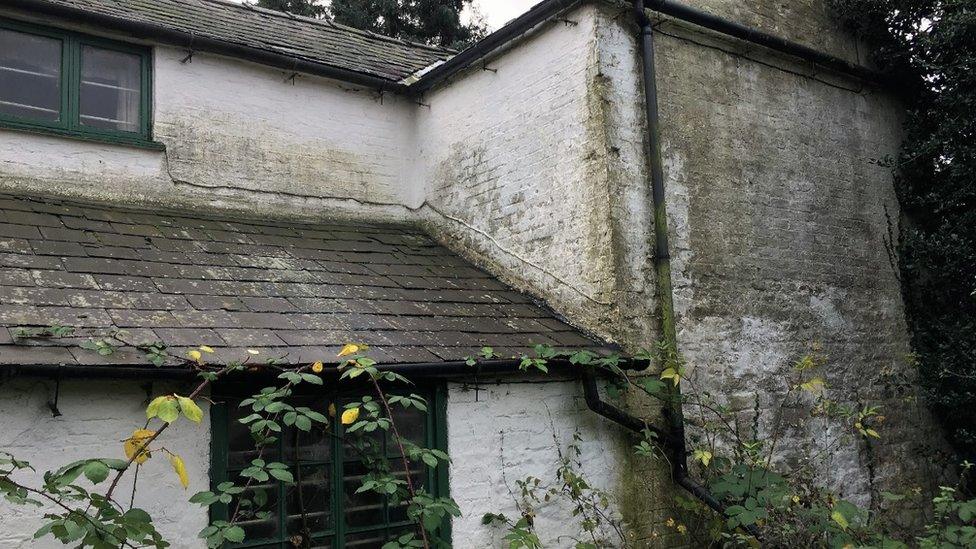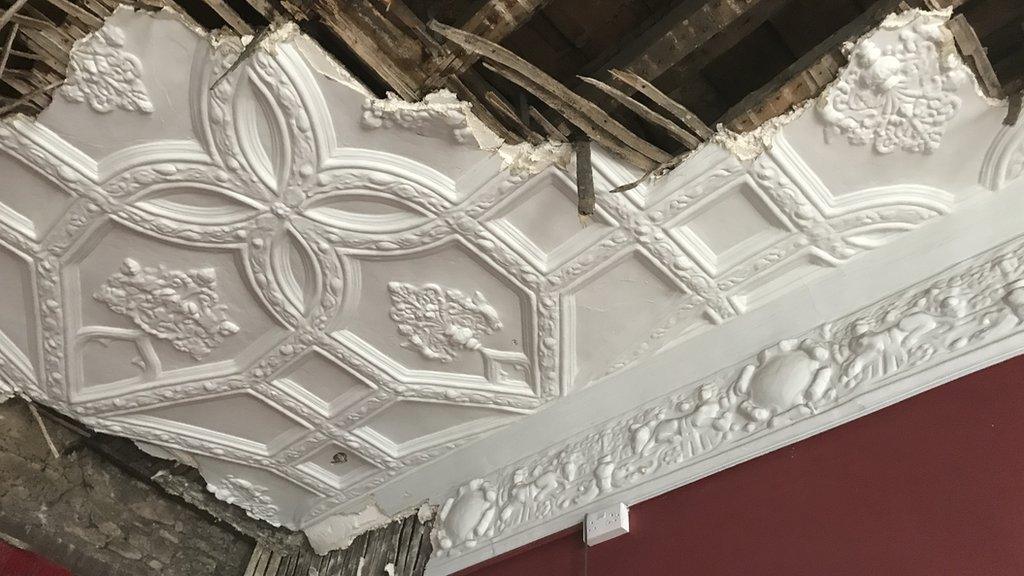Grantham 'plague house' awarded protected status
- Published

White Cottage, on Manthorpe Road, Grantham, was built in 1584
A 16th Century house built to home plague victims has been awarded Grade II listed status.
White Cottage, on Manthorpe Road, Grantham, was built in 1584 to isolate "infected people" if the need arose.
South Kesteven District Council said the property, known as a "pest house", was of significant architectural interest.
It said despite being largely rebuilt in the 18th Century, the building still had some of the original stone walling.
"This is good news as it means any alteration would need special permission," a council spokesperson said.
"It is now another part of Grantham [and] protected for future generations."
According to Historic England, which oversees the protected status process, the lease on the house issued by the Aldermen and Burgesses of Grantham in 1584 states that if the town was "visited with the plague called the pestilence or any other smiting disease or contagious sickness it shall be thought good to divide the infected people from the whole".
The privately-owned house, thought to be one of only six of its kind still remaining in England, probably ceased to be used as a place of isolation in the late 19th Century when an infirmary and fever hospital opened nearby, Historic England added.

Plague

It was known as the "Black Death" during the 14th Century, causing an estimated 50 million deaths
People infected with the plague usually develop "flu-like" symptoms after an incubation period of 3-7 days
There are three forms of plague infection depending on the route of infection: bubonic, septicaemic and pneumonic. Bubonic, characterised by painful swollen lymph nodes or 'buboes', is the most common form
The plague of 1665-1666 was the last major outbreak of bubonic plague in Britain, killing nearly a quarter of London's population
Source: World Health Organisation

Follow BBC Yorkshire on Facebook, external, Twitter, external and Instagram, external. Send your story ideas to yorkslincs.news@bbc.co.uk, external.
- Published22 March 2016

- Published1 September 2017

- Published22 August 2011
